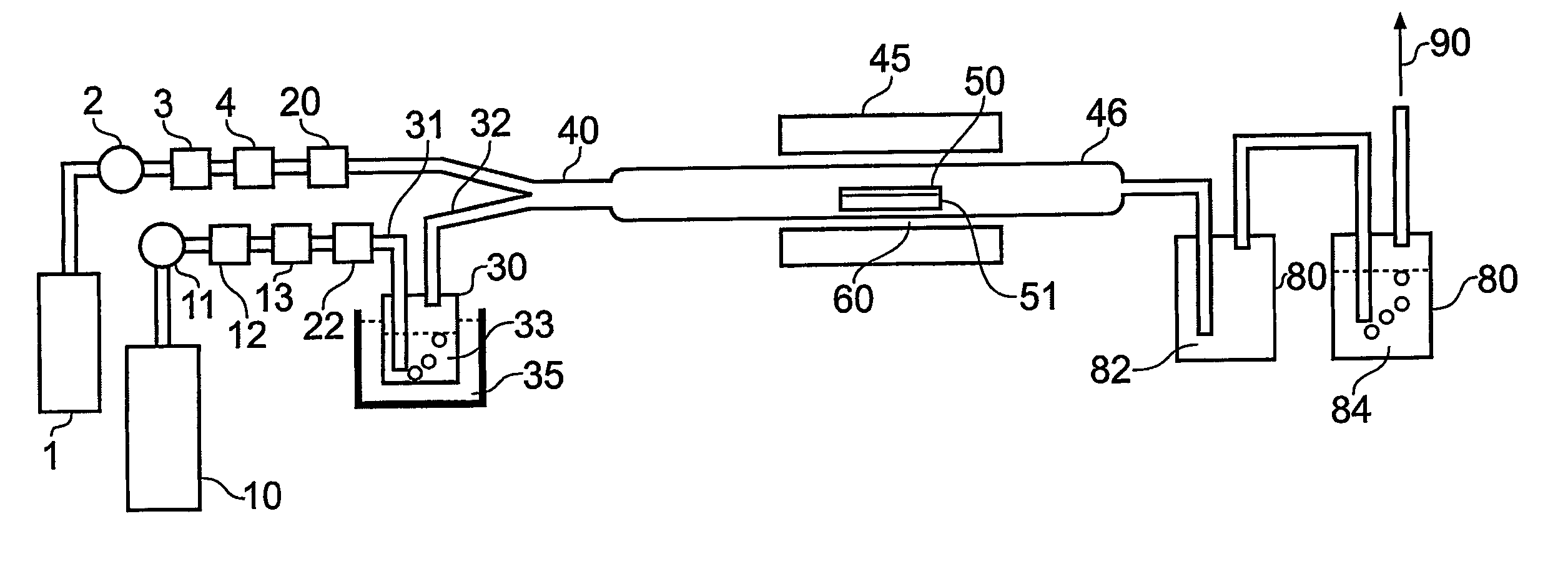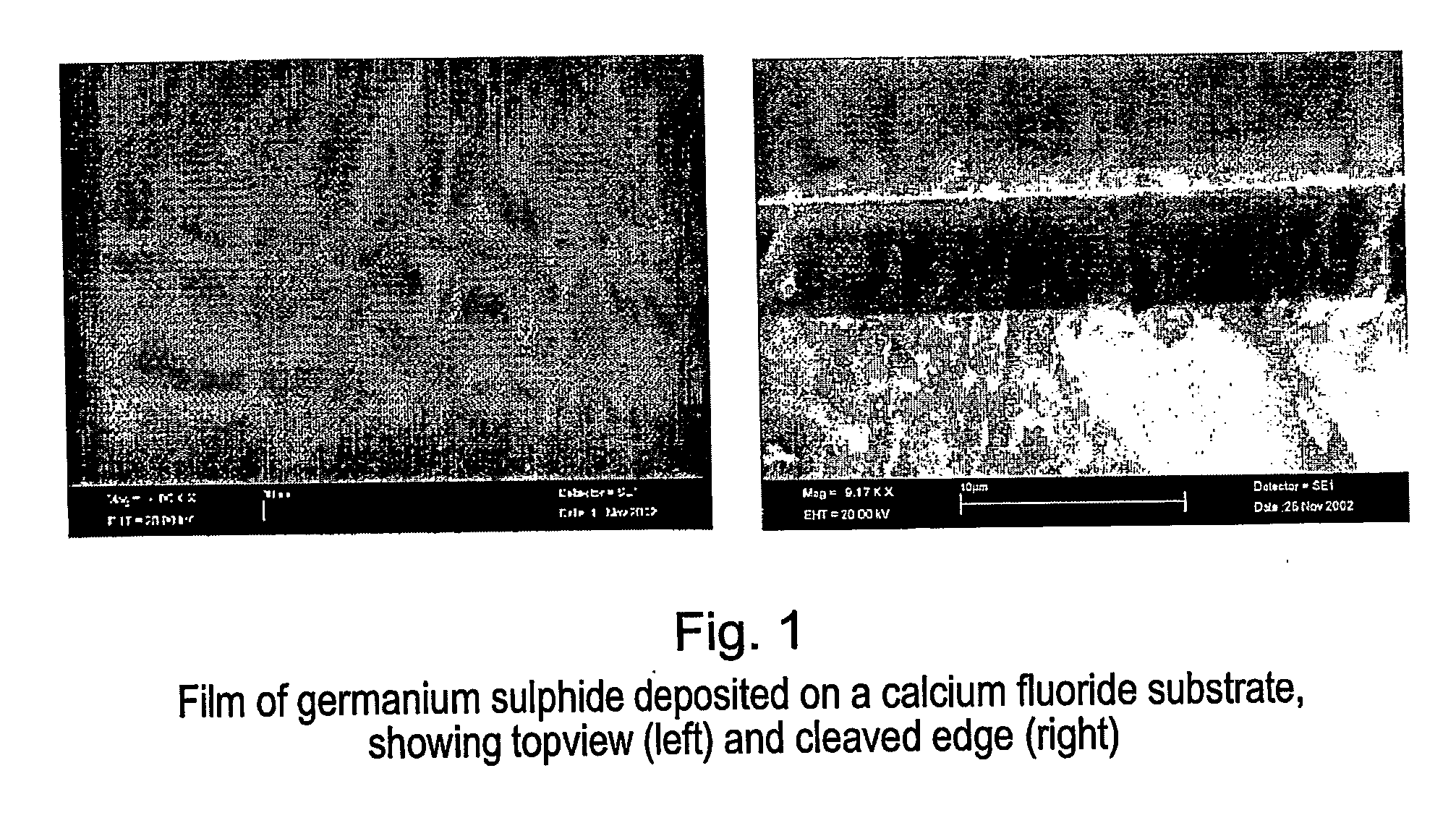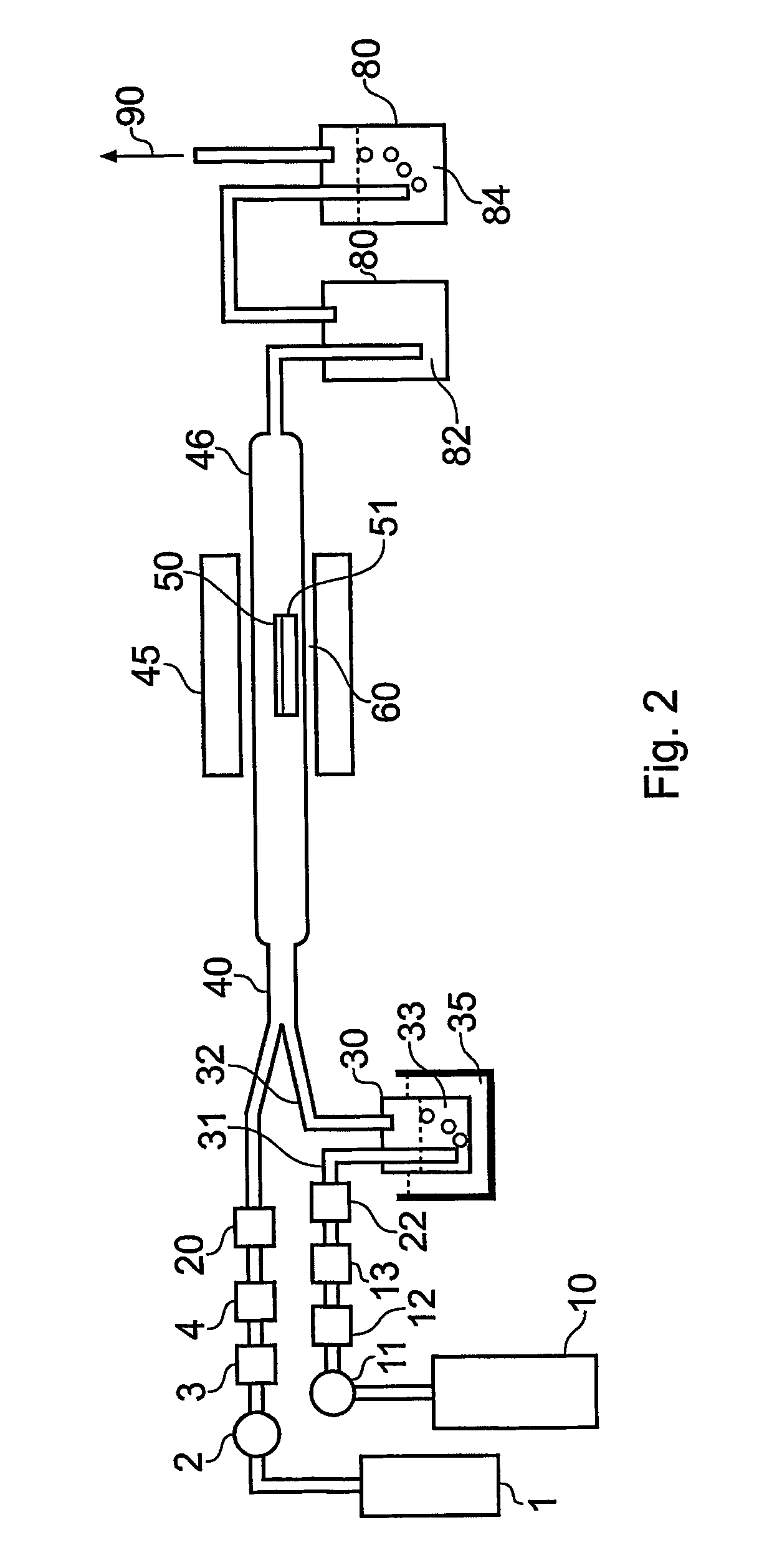Synthesis of germanium sulphide and related compounds
- Summary
- Abstract
- Description
- Claims
- Application Information
AI Technical Summary
Benefits of technology
Problems solved by technology
Method used
Image
Examples
example 1
Thin Film Deposition
[0099] To illustrate the capability of the process of the present invention for deposition of chalcogenide thin films, germanium sulphide glass thin films were directly deposited onto a planar calcium fluoride substrate using a chemical vapour deposition process as shown in FIG. 1. This invention shows that the reaction of germanium tetrachloride (GeCl4) as a precursor, with hydrogen sulphide (H2S) which is co-delivered with the GeCl4 into a heated furnace, is thermodynamically favourable to produce germanium sulphide glass film at atmospheric pressure and temperatures of about 500° C. Moreover we have demonstrated that the reaction produces germanium sulphide in a glass phase in a single deposition step.
[0100] The reactor used in the experiment is a 16 mm O.D.×500 mm long quartz tube, which is located within a horizontal tube furnace, which is resistively heated. One skilled in the art would recognise this as typical of a hot wall CVD process in which depositi...
example 2
Channel Optical Waveguides
[0107] To illustrate the capability of this invention for the formation of optoelectronic device applications and in particular optical waveguide circuitry capable of guiding and manipulating light channel optical waveguides have been achieved. We have successfully fabricated patterned structures, in this case ridge waveguides in the glass films produced by the process disclosed in this invention.
[0108] Thin films as fabricated in example one were patterned and milled to produce waveguide channels. The process exploited both photolithography and argon ion-beam milling, which one skilled in the art would recognise as an important fabrication prerequisite for optoelectronic circuitry. In the photolithography process, we use a positive Shipley S1813 photoresist and Puddle MF319 developer. One drop of Shipley S1813 photoresist was spin coated at 6000 rpm for 60 seconds on a germanium sulphide thin film. This film was baked at 90° C. for 30 minutes before expo...
example 3
Bulk Glass Fabrication
[0112] In this example we show formation of germanium sulphide powder that is melted in situ to form an amorphous solid or bulk glass. The apparatus is illustrated FIG. 8.
[0113] The reactor used in the experiment is a custom build borosilicate chamber of dimensions 50 mm O.D. and 150 mm long that is partially located within a vertical tube furnace that is resistively heated. This is not typical of a conventional CVD reactor that is useful for thin film deposition. Here there is a second collection vessel, which is an integral part of the entire apparatus and which is heated separately and the provision for both an open flowing atmosphere, operating at ambient pressure or slightly above ambient pressure and well as the provision for heating, after the CVD process is completed, to a temperature above the melting temperature of the CVD products.
[0114] During the deposition phase of the experiment, a flow rate for the argon (Ar) carrier gas was 100 ml / min and wa...
PUM
| Property | Measurement | Unit |
|---|---|---|
| Temperature | aaaaa | aaaaa |
| Temperature | aaaaa | aaaaa |
| Temperature | aaaaa | aaaaa |
Abstract
Description
Claims
Application Information
 Login to View More
Login to View More - R&D
- Intellectual Property
- Life Sciences
- Materials
- Tech Scout
- Unparalleled Data Quality
- Higher Quality Content
- 60% Fewer Hallucinations
Browse by: Latest US Patents, China's latest patents, Technical Efficacy Thesaurus, Application Domain, Technology Topic, Popular Technical Reports.
© 2025 PatSnap. All rights reserved.Legal|Privacy policy|Modern Slavery Act Transparency Statement|Sitemap|About US| Contact US: help@patsnap.com



